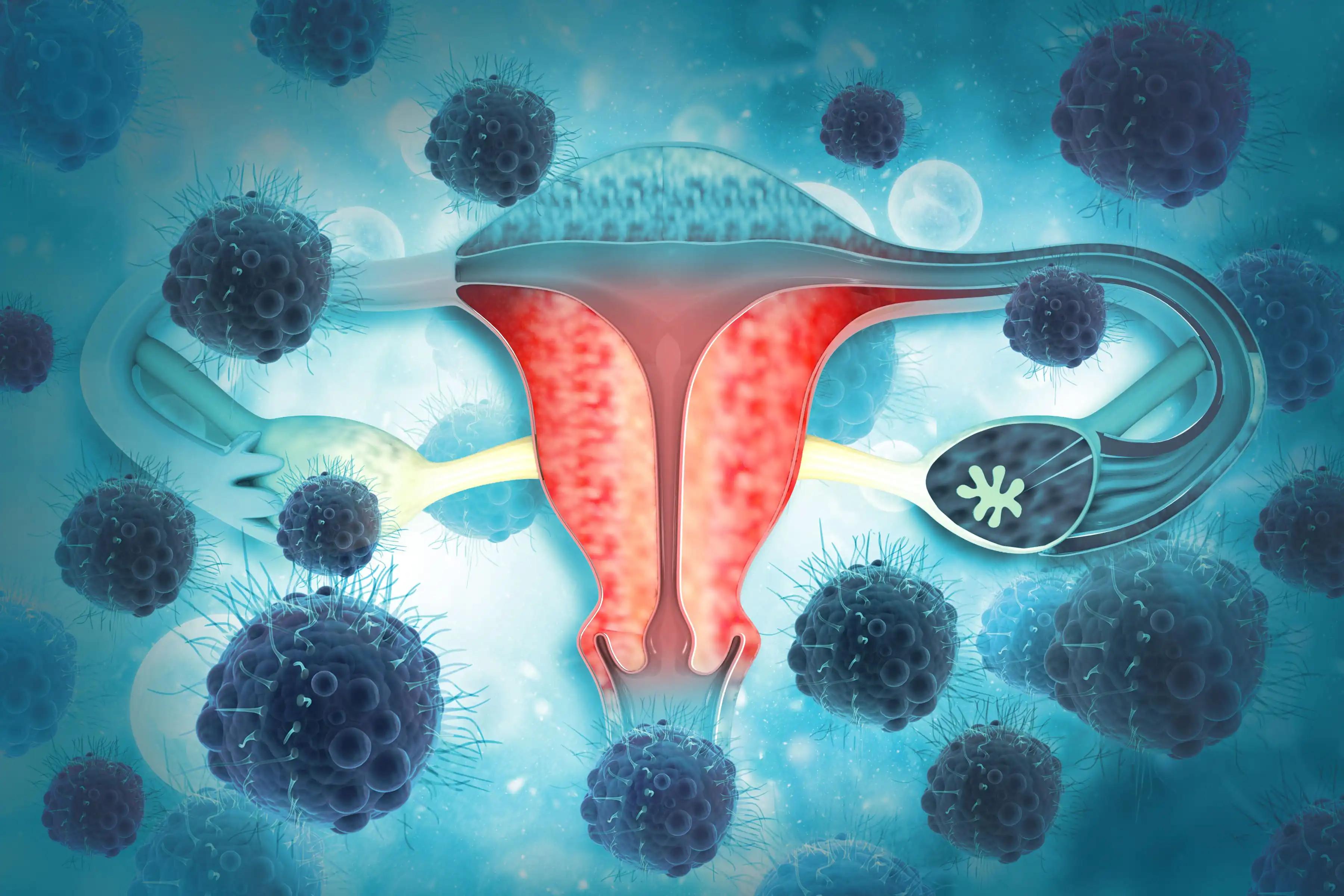KEY TAKEAWAYS
- The phase 1 trial aimed to investigate the RP2D of copanlisib and niraparib combination and assess molecular response markers in patients with OC/EC.
- Researchers noticed suboptimal tolerability observed with copanlisib and niraparib combination despite clinical benefits in some patients; further investigation is ongoing.
Ovarian and endometrial cancers (OC/EC) present significant challenges in treatment, prompting the exploration of novel therapeutic combinations. Copanlisib, a PI3K inhibitor, and niraparib, a PARP inhibitor, show promise individually, but their efficacy and safety as a combined therapy remain to be determined.
Allison L. Brodsky and the team aimed to establish the recommended phase II dose (RP2D) of copanlisib and niraparib combination therapy in patients with OC/EC
They performed an inclusive analysis of a phase 1b trial employing a BOIN design to assess the combination of copanlisib and niraparib in patients with OC/EC. Copanlisib was administered intravenously on days 1, 8, and 15 of a 28-day cycle, while niraparib was orally administered once daily. Four dose levels were explored within a dose-limiting toxicity (DLT) window of 28 days.
Responses were evaluated using RECIST v1.1 criteria, with patients undergoing baseline, post-treatment (after 28 days), and optional progression biopsies for planned correlative testing. Clinical benefit was defined as achieving an objective response or stable disease for > 4 cycles.
About 30 patients were enrolled in the study, with equal distribution between ovarian (n=15) and endometrial (n=15) cancers, all exhibiting epithelial pathology. The demographic makeup included 7.4% Black and 23.4% Hispanic patients, with a median age of 62.5 years (range 44-80). The median number of prior therapies was 2 (range 1-4), and 20% of patients had either germline or somatic BRCA mutations.
Among the 12 patients treated at DL1, 4 experienced DLTs, leading to DL1 being explored as the RP2D. An expansion phase with an additional 7 patients revealed 3 DLTs, prompting treatment of an additional 4 patients at DL-1, where 2 DLTs occurred.
The most common adverse events (>20%) included leukopenia (90%, G3/4 37%), hypertension (83%, G3/4 60%), thrombocytopenia (70%, G3/4 7%), fatigue (63%, G3/4 0%), nausea (63%, G3/4 0%), anemia (50%, G3/4 10%), hyperglycemia (50%, G3/4 20%), neutropenia (47%, G3/4 10%), rash (47%, G3/4 30%), anorexia (40%, G3/4 0%), constipation (40%, G3/4 0%), diarrhea (33%, G3/4 3%), headache (30%, G3/4 0%), oral mucositis (30%, G3/4 3%), elevated creatinine (20%, G3/4 0%), and emesis (20%, G3/4 0%).
The study concluded that the combination of copanlisib and niraparib exhibited poor tolerability despite yielding clinical benefits in a moderate number of patients. However, the overall response rate (ORR) remained low. An ongoing assessment of molecular correlates of response and resistance is underway to further elucidate treatment outcomes.
The trial was sponsored by the M.D. Anderson Cancer Center.
Source: https://sgo.planion.com/Web.User/AbstractDet?ACCOUNT=SGO&ABSID=428305&CONF=AM2024&CKEY=
Clinical Trial: https://clinicaltrials.gov/study/NCT03586661
Brodsky A L., Fellman B M., Anderson K, et al. (2024). “COPANIRA: Phase Ib trial of copanlisib (PI3K inhibitor) and niraparib (PARP inhibitor) in recurrent ovarian and endometrial cancer.” Presented at SGO 2024.



